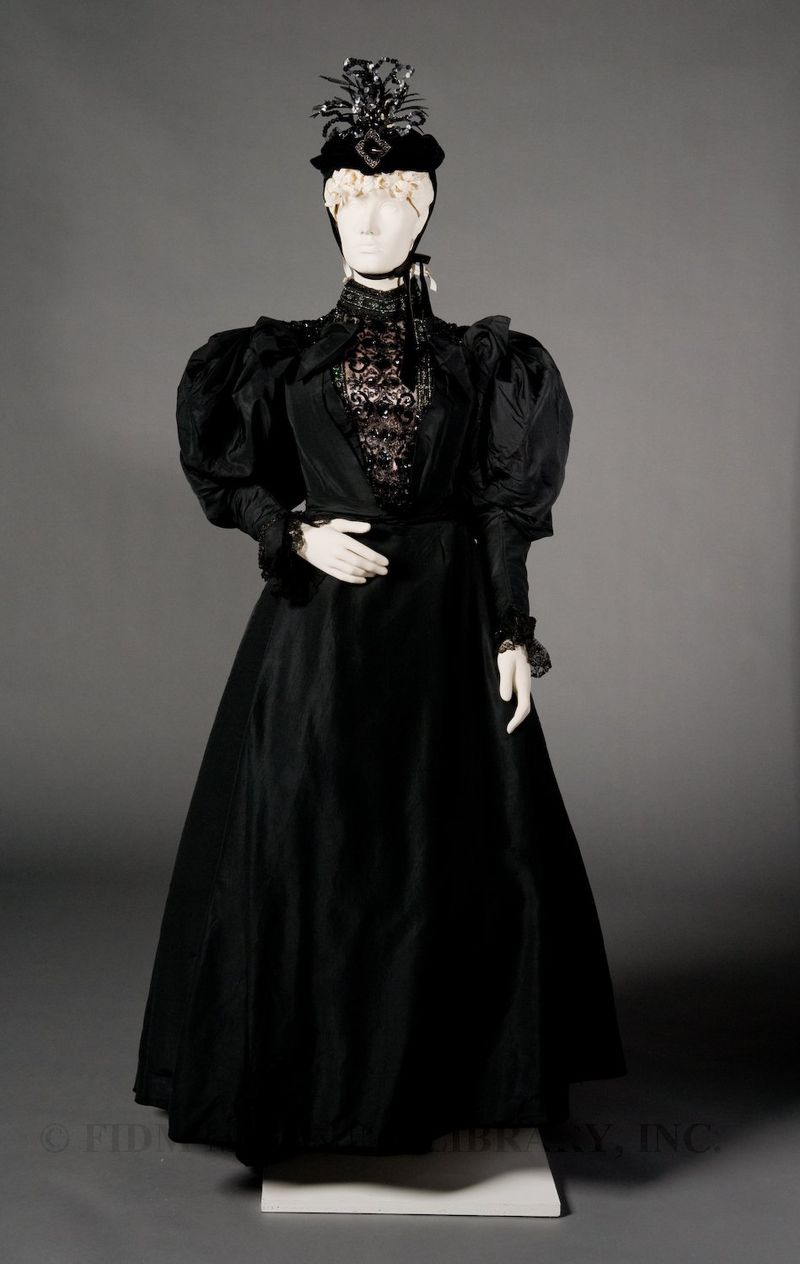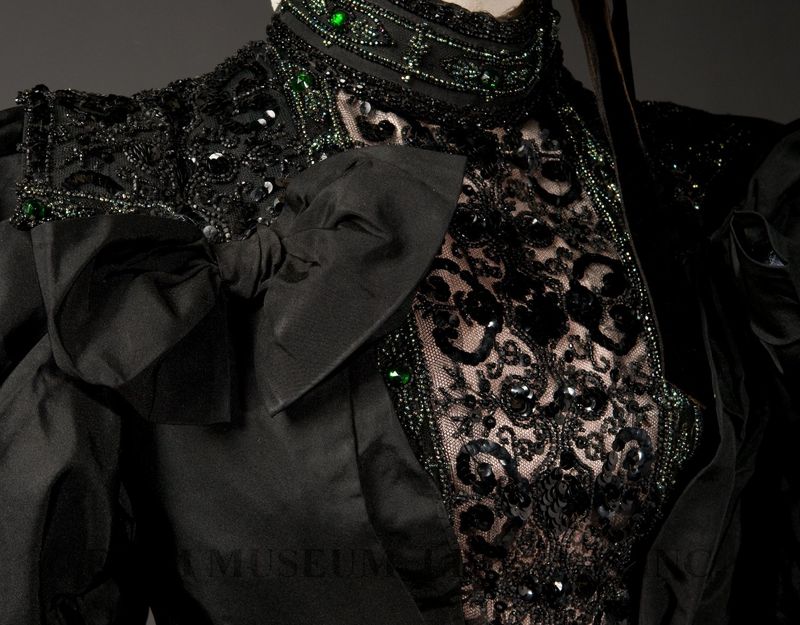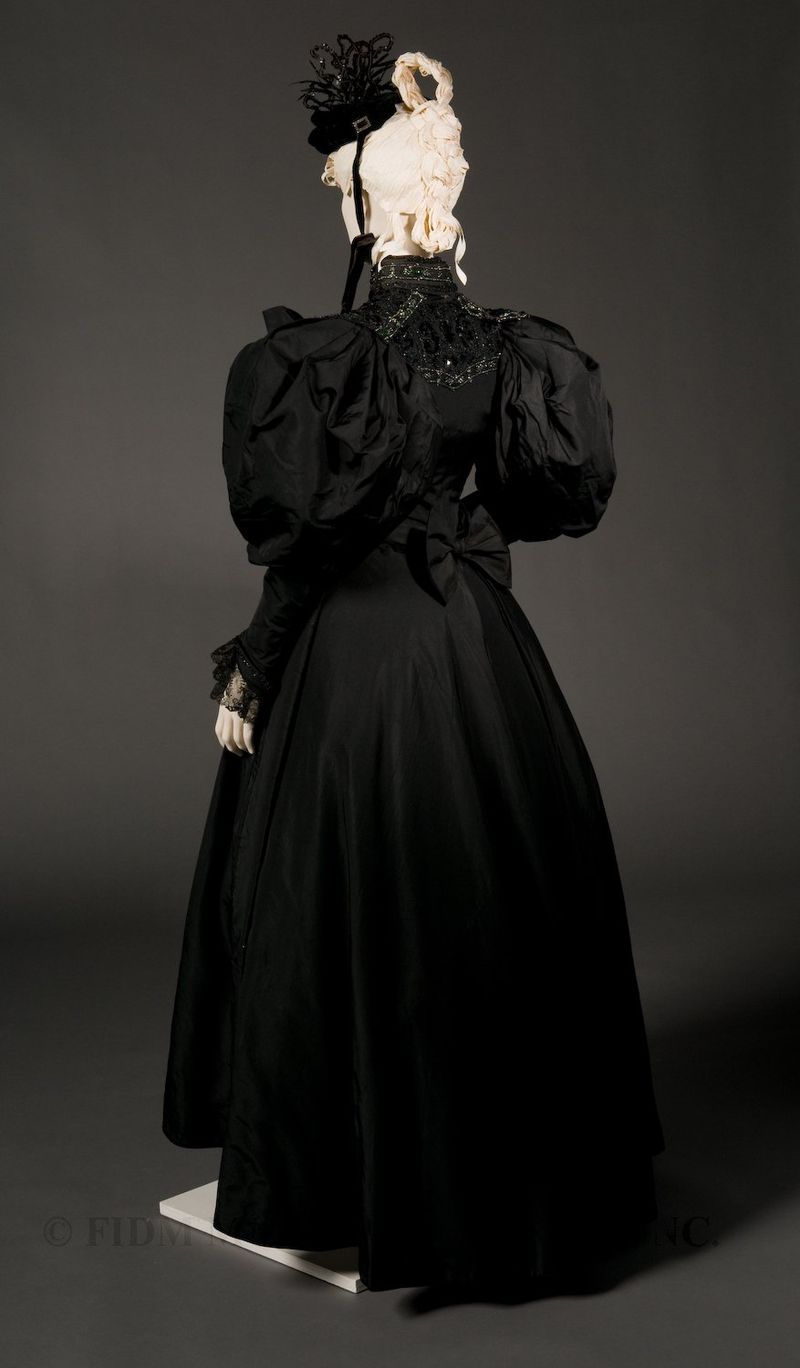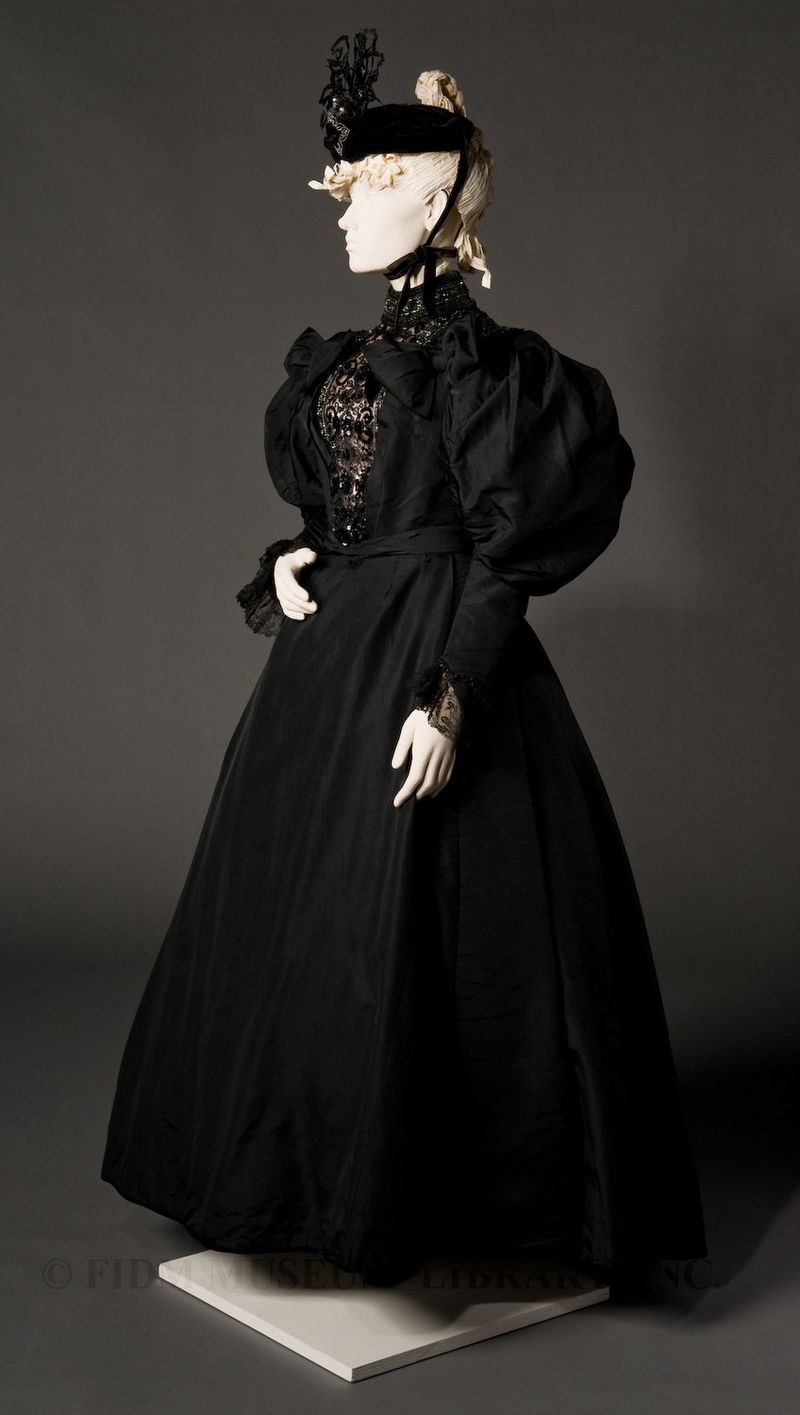Black silk faille formal dress, 1894-96
Studying period garments, fashion illustrations, reference books, and whenever possible, photographs, helps create a mental checklist against which to compare undated garments and images. Unfitted, columnar dress with elaborate beading? Start thinking about the 1920s. A women's suit with fit and styling reminiscent of menswear? Consider the styles of the World War II era. Of course, you'll need to watch out for styles that reference past fashion trends. Carefully examining labels, fabric, trim and construction details can help you ferret out whether a garment is a period original or later revival. There will always be tricky garments that defy exact dating, but understanding when specific styles emerged and declined enables researchers to date and contextualize historic garments.
 Two-piece formal dress
Two-piece formal dress
1894-96
Gift of The Fashion Institute of Design & Merchandising
87.25.1AB
When you're confronted with incredibly large, leg o'mutton sleeves, think of the 1890s! At the beginning of the decade, sleeves were tight on the arm and featured an upward puff of fabric at the shoulder. This small puff rapidly expanded, moving to the upper arm and gradually increasing in size. By 1896, women's sleeves were typically full at the upper arm, tighter from the elbow down. After 1896, sleeves gradually deflated, and by the end of the decade close-fitting sleeves were back in fashion. There were, of course, other sleeve styles during this decade, but the full, wide sleeves seen on this formal day or late day dress were extremely popular. Despite their seemingly impractical size, they were even incorporated into garments designed for walking and bicycling. According to an 1894 article in The Ladies' Home Journal, moderately full sleeves required 3 yards of 23 inch wide fabric, while the fullest examples used up to 4 yards of fabric.1 The shape was supported by a lining of crinoline, stiffened lawn or fiber chamois.
Full sleeves were also a distinguishing feature of 1830s dress, so you'll need to know what other traits distinguish the 1890s. High, standing collars were the standard for day dress, with at least one fashion periodical declaring that "to permit one's neck to show in daytime is bad form."2 Skirts of the 1890s were usually plain expanses of solid-colored fabric, a foil for heavily decorated bodices. Elaborate embellishment was especially popular on bodices mid-decade. This bodice features scrolling seed bead and sequin embroidery accented with green glass stones. Bows, usually placed in symmetrical pairs, were also popular. This dress features two self-fabric bows at either side of the bodice, and a bow at the back waist.
Though nineteenth century black clothing is often characterized as mourning dress, black was also worn for fashion. According to The Ladies' Home Journal in 1895, a "well-dressed women always appreciates the vogue given to all black costumes."3 This black dress is made from silk faille, a tightly woven fabric with a lightly ribbed texture.
Never forget to check inside the garment for a maker or retailer label! This dress bears an unusual label: Maynard, Tailleuse pour Dame, Salt Lake City, Utah. In the 1890s, Salt Lake City was a relatively new community; the first non-native settlers had arrived only in the late 1840s. Founded by Mormons fleeing persecution in other parts of the United States, Salt Lake City expanded rapidly, aided by new railroads and lots of immigrants. These same railroads allowed for a relatively rapid flow of information. Travelling by rail, fashion periodicals, catalogs, and fashionably-dressed visitors could reach even remote frontier outposts like Salt Lake City. Despite working at a great distance from New York and Paris, Maynard was clearly able to obtain up-to-date fashion information. Using fashion illustrations, written decsriptions from magazines, and maybe even a model gown, Maynard created this fashionable example of 1890s dress for an unknown resident of Salt Lake City.
1 Hooper, Emma M. "Combination of Colors in Dress." The Ladies' Home Journal. Dec. 1894: 28.
2 Quoted in Severa, Joan L. Dressed for the Photographer: Ordinary Americans and Fashion, 1840-1900. Kent, Ohio: Kent State UP, 2005: 457.
3 Mallon, Isabel A. "Evening Bonnets & Wraps." The Ladies Home Journal. Dec. 1895: 35.


